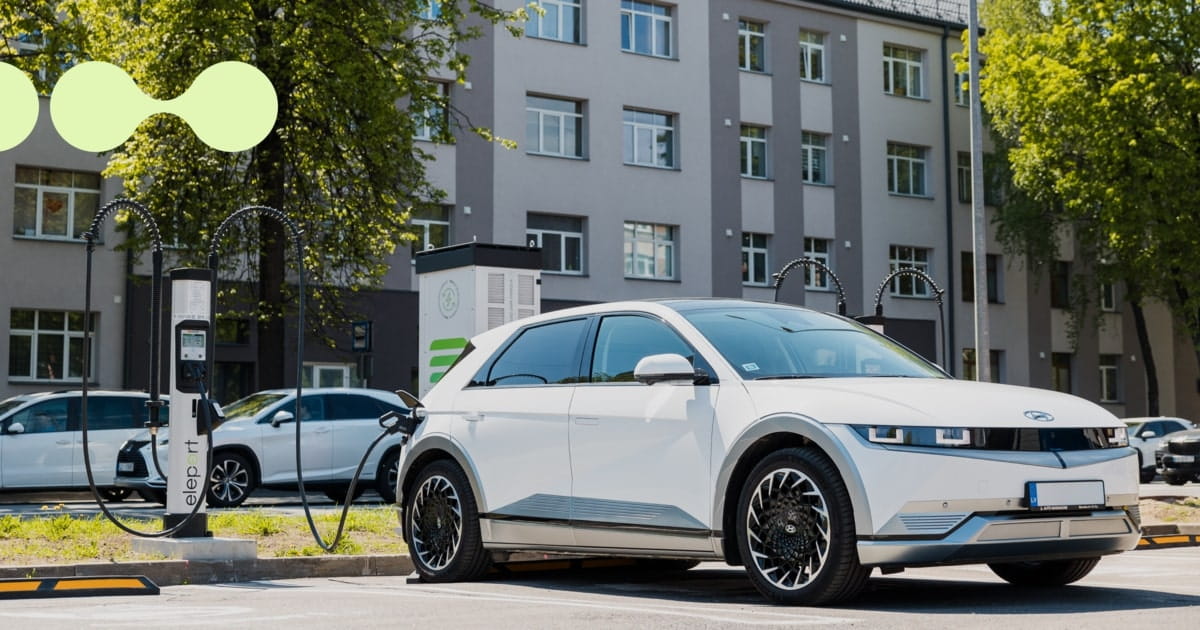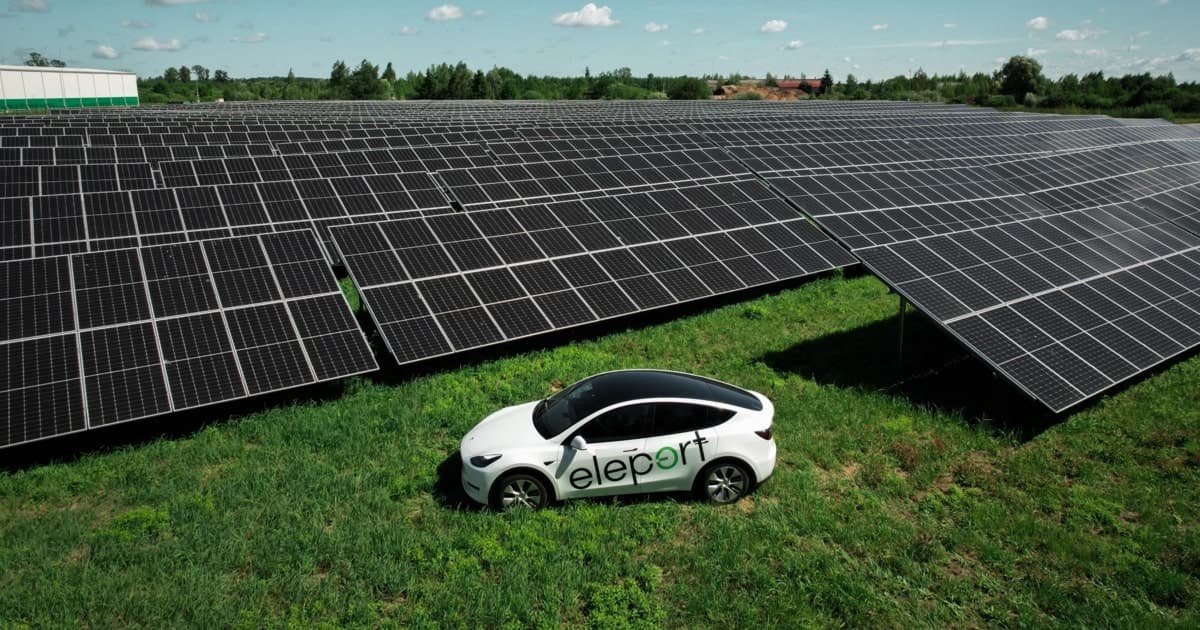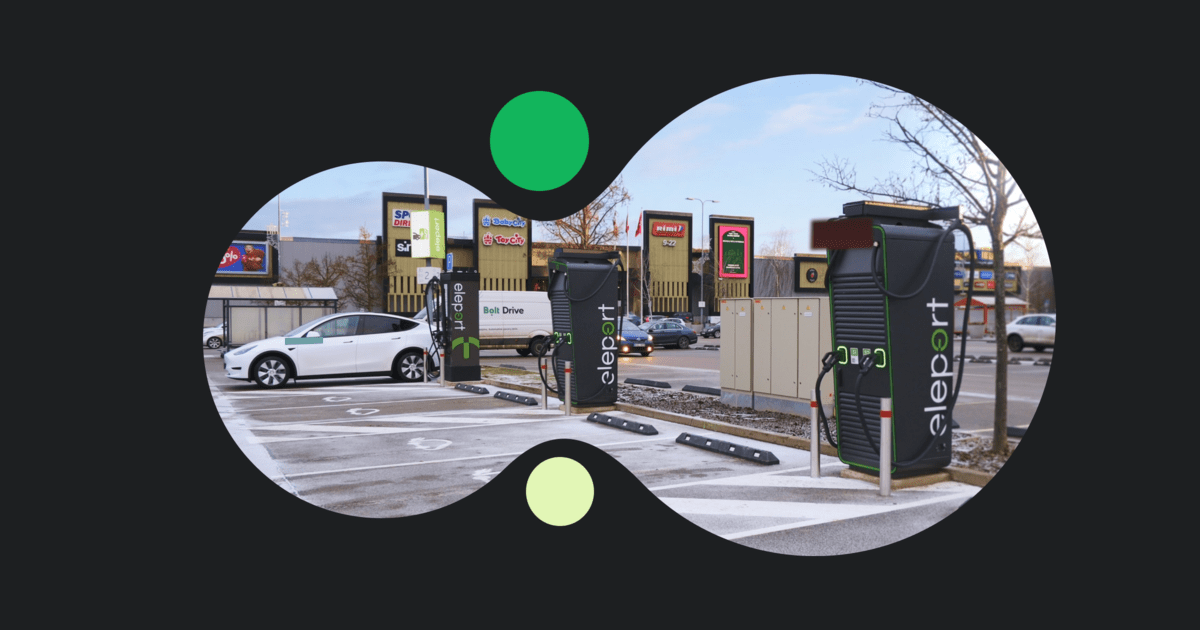The millions of EV owners who have chosen to go electric have not done it only for quiet rides and environmental concerns. They choose them because EVs represent a shift—from extraction to regeneration, waste to efficiency, old systems to new ones.
And no, this shift isn’t driven purely by ideals. It’s happening because the numbers are starting to work. The cost of ownership has dropped, and in more and more cities, choosing clean transport is no longer optional—it’s built into policy. EV charging companies have helped remove the remaining friction by expanding practical, accessible infrastructure.
So, what are the benefits of electric cars? They’re not vague or hypothetical. They’re visible, measurable, and increasingly hard to ignore.
Environmental Benefits of Electric Cars
The environmental argument for electric cars is often taken for granted – or dismissed too easily by those opposing –, but the details are where it all becomes really compelling. EVs are not about vague promises of “going green” or moral superiority on the road. It’s about material impact. Replacing combustion engines with electric drivetrains doesn’t reduce emissions incrementally—it cuts them off at the source. And when that change happens at scale, it doesn’t just clean the air. It reshapes energy systems, rewrites urban health trends, and exposes how wasteful the old model really was.
Lower CO2 Emissions — Even When You Include Battery Production
What are the benefits of electric cars when it comes to carbon emissions? This is where things get specific. The most common argument from the opposing side to EVs is about the emissions in battery production. Yes, EVs have a production footprint just like ICE vehicles, and the main difference from ICE vehicle production does come from the need to produce the batteries.
In fact, it is true that at the moment an electric car rolls off the production line, the CO2 emissions through the full production process have been larger than for a comparable fossil fuel vehicle. So electric cars come out behind. But the magic comes right after the electric car enters the real world. Since there are no tailpipe emissions involved compared to burning fuel in combustion engines, other than whatever emissions are generated in our increasingly renewable electricity generation, electric cars catch up and get ahead not just in long timeframes, but actually measurably fast.
The ICCT 2025 report which takes into account all emissions for both running and producing EV and ICE vehicles, found that EVs have 73-78% lower lifetime CO2 emissions than ICE vehicles, depending on how renewable the energy mix of the grid is from which EVs are charged. Since the lifetime of a car can be more difficult to comprehend, here’s another point of view – EVs start winning over ICE in emissions per every kilometre driven after 17000 km on average.

So when an EV rolls off a production line, it just takes 1 to 2 years of driving to be already in the win emissions-wise, and the environmental win comes with every single kilometre after this point.
There is also another hidden win coming to this formula with the high uptake of electric cars across the world. Something that is not even possible in the combustion world, and tackles the very issue that makes electric car production emit more in the first place. The batteries. When the electric car battery degrades over time and is eventually discarded after tens of years in service, the battery recyclers are now already able to recycle up to 95% of the battery back to the raw materials.
These materials can then be used to produce another battery and will enter the cycle again and again for decades. All this means that the more EVs are sold every year, the less resource-intensive the production process of the batteries becomes in the near future, which in turn eventually leads to EVs coming out ahead of the ICE right from the production line.
Cities Breathe Easier
Tailpipe emissions from fossil fuel vehicles don’t disperse safely into the sky—they settle right where we breathe. In traffic-heavy neighbourhoods, especially near schools, hospitals, and high-density housing, the cost of combustion shows up in asthma diagnoses, cardiovascular illness, and even premature death.
Researchers link over 70,000 early deaths each year in the EU alone to traffic-related air pollution (EEA 2024 report). Luckily, cities are already reversing the trend. Since expanding its low-emission zone and rolling out electric buses and taxis, London has seen nitrogen dioxide levels drop by more than 35% on major roads. That’s not theory—it’s baseline health protection. And a lot of cities have followed suit, with low-emission zones being launched in European cities like Berlin, Paris, Warsaw, and soon also in Riga.
Efficient by Design
Electric cars aren’t more efficient by chance. The drivetrain converts more than 85% of input energy into motion, while petrol engines struggle to reach 30%. Most of what they burn becomes heat, not going into driving you the distance.
That gap translates not only to you getting more kilometres out of every euro you spend “refueling”, but also directly into lower emissions per kilometre, even in places where the grid still includes fossil fuels. As battery technology improves, manufacturing efficiency rises, too. In short, less energy will be going in, more utility is coming out, and less pollution will take place across the globe.
Economic Benefits of Electric Cars
So, what are the benefits of electric cars from the point of view of saving money? For many drivers, cost matters just as much as carbon dioxide emissions. On this front, electric vehicles increasingly offer clear, long-term advantages—especially across Central and Eastern Europe, where fuel prices continue to swing unpredictably and household budgets remain tight.
Fuel Costs That Make Sense
Fuel prices jump, dip, and spike—often for reasons well outside local control. Electricity prices aren’t immune to change, but they’re typically more stable, and in most of Europe, they’re much lower than the equivalent cost of petrol.
Charging an EV at home often costs less than €1.50 per litre in equivalent energy terms. The cost drops further for those with access to solar panels or even a smart fixed-rate plan. A typical driver covering 15,000 kilometres annually could save more than €1,000 annually on energy alone.
Maintenance: Fewer Headaches, Fewer Bills
Internal combustion engines are complex. Most people know that from experience—leaking fluids, failed sensors, strange noises, and costly repairs. Electric motors are simpler and don’t have exhaust systems, oil filters, or dozens of heat-sensitive parts under pressure. That’s not a minor detail. It’s a shift in how maintenance works, and more importantly, how often it’s needed.
Fleet owners across Europe already see the difference, with reports of 30 to 40 % drops in service costs. Individual drivers sometimes notice it after the first year, when the car doesn’t need what they expected from their past experiences with ICE cars. EVs are also not maintenance-free, but they are closer to it than most people realise.
Governments Still Want to Help
Not every country offers the same support, but in our part of Europe, incentives are still active and worth knowing about. Lithuania, for instance, provides up to €5000 toward a new or 2000€ towards a used EV. Poland’s “Mój Elektryk” programme can offer as much as PLN 27,000 (roughly €6,000). Buyers may benefit from corporate or tax-related incentives in Estonia, depending on the setup.
There are also smaller but meaningful perks: free parking in some cities, access to bus lanes, sometimes also reduced annual taxes, and access to low-emission zones without extra fees. Taken together, these extras lower the financial barrier and help explain why adoption is growing even in price-sensitive markets. Later, as EV adoption picks up meaningfully, these perks are usually slowly phased out.
Practical and Social Benefits of Electric Vehicles
The consequences of switching to electric vehicles are not confined to drivetrain mechanics, reduced costs, or tailpipe emissions. Once combustion engines begin to disappear, other changes follow—some expected, others less so.

Reduced Urban Noise and Public Health Externalities
Anyone who has lived near a busy street knows the constant background noise of engines. It’s not just sound—it’s stress, even if you stop noticing it. Replace petrol-powered traffic with electric vehicles, and that hum begins to fade. This is already very notable if you visit cities with a high percentage of EVs in their fleet – the streets of Oslo, for example, are now noticeably quieter to walk around in. Noise pollution drops, particularly in the low-speed, stop-start conditions common to urban centres. The change is subtle but significant, improving quality of life in ways that don’t appear on a balance sheet.
Integration into Urban Infrastructure
The rise of electric mobility is beginning to influence how cities are physically organised. Charging infrastructure is no longer an afterthought; it is now integrated into residential, commercial, and public developments by design. Companies like Eleport build networks that reflect real-world charging behaviour, prioritising access, frequency, and convenience over raw station counts. The idea of planning cities around fuel stations belongs to the past.
Charging has become part of broader strategies for decarbonisation, energy resilience, and urban livability. As networks expand, tools like EV charging near me make it easier for drivers to locate charging without interrupting their routes.
Improved User Experience and Range Confidence
So, what are the benefits of electric cars, like social benefits? They are also include the user experience itself— EVs are fun to drive. Linear acceleration that you can access both from standstill or at highway speeds for overtaking, near-silent cabins, and regenerative braking all reshape how driving looks and feels. The lower center of gravity, thanks to the battery pack in the floor, gives most EVs outstanding driveability. This also leads to a 10-15% lower rollover risk compared to ICE car equivalents, per Euro NCAP safety studies. Electric vehicle range is no longer a central constraint. Most new models now exceed 300 km per charge. For most European users, that covers typical commuting needs multiple times without needing to recharge.
The Future of Electric Cars and Industry Growth
Electric mobility is no longer defined by early innovation or market experimentation. It now moves forward with industrial scale, political backing, and technical momentum. What began as a challenge to legacy systems has evolved into a redefinition of the systems themselves—how vehicles are powered, where energy flows, and how cities prepare for what comes next.

Charging Becomes Invisible
Charging infrastructure is moving from visible hardware to quiet utility. Vehicles will refuel while parked—at work, home, even in public spaces—without requiring driver involvement. More often than not, the EV drivers of today are starting to find they don’t have to go “out of their way” to charge their cars anymore. The electric car is instead plugged in at locations they would visit anyway, be it at a shop, a cinema, or while waiting for a friend at a bus station. Wireless inductive pads, intelligent time-of-use charging, and energy flows between cars and home batteries are all on their way to replace the gas station ritual with something passive, efficient, and eventually unnoticeable.
Battery Technology Breaks the Barrier
Battery limitations once defined electric vehicles and the EV user experience. That constraint is dissolving. Ranges exceeding 500 kilometres WLTP are becoming typical. Meanwhile, the current LFP and NMC batteries are becoming more efficient with technological advances, and the potential of solid-state and graphene materials is pushing energy density, safety, and recharge time to levels even combustion engines can’t match. Even after automotive use, batteries retain value as storage assets, grid balancers, and part of a larger circular energy economy.
The Policy–Industry Flywheel
The electric shift is not happening in isolation, and it has needed some leveling of playing fields also from the regulatory side, for the industry not to be too disadvantaged compared to the oil & gas industries. Regulatory pressure forces some of the adoption, scaling of the industry drives cost reduction, and each round of progress triggers the next. This interaction has become a global pattern. What began as targeted incentives has matured into a self-sustaining feedback loop. The pace of electrification of the flywheel varies by region, but the outcome is already in motion everywhere.
Conclusion
Electric cars are not just a new emerging technology or a niche thing for the early adopters anymore. They’re here, and the shift EVs represent is already embedded in how cities plan, energy systems evolve, and industries respond. The benefits of electric cars—lower emissions, fewer mechanical failures, cleaner air, better driving experience, and quieter streets—are not theoretical. Instead, tens of millions of people already feel these benefits today, and the adoption is visibly scaling up
This isn’t a better version of the old system. It’s a departure from it, one that replaces fuel with flexibility and noise with function. Whether people arrive at electric mobility through policy, price, or principle doesn’t really matter. What matters is that the direction is set, and nothing in the old model is built to last much longer.



